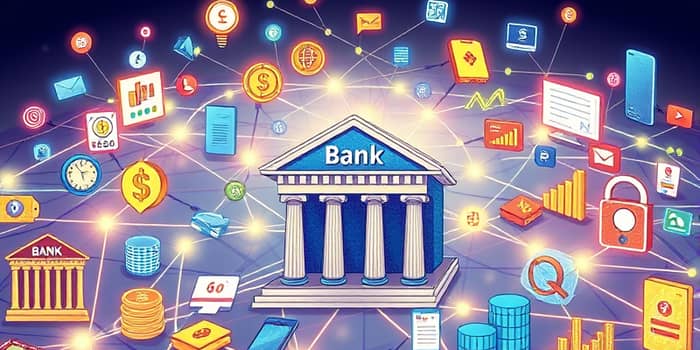
In a world driven by data, traditional banking walls are crumbling. Open banking is ushering in an age where consumers, fintechs, and banks collaborate seamlessly, powered by secure sharing of banking data and innovative APIs. This new model places individuals at the heart of financial services, unlocking possibilities that were once unimaginable.
At its essence, open banking refers to the standardized APIs for data exchange, enabling customers to share their transaction and account information with authorized third parties. This departure from closed systems creates transparency, interoperability, and consumer control over personal financial data.
Under this model, individuals decide which apps or services access their information, fostering greater control and choice in how data is used. Banks, fintechs, and third-party providers collaborate under strict regulatory oversight, ensuring robust encryption, consent management, and privacy safeguards.
These figures underscore explosive growth. From emerging markets in Asia-Pacific to mature ecosystems in Europe, open banking adoption is soaring as consumers seek streamlined financial experiences. By 2027, nearly 600 million people worldwide will rely on open banking to manage payments, budgeting, and credit access.
The economic benefits of open banking are already tangible. In the United Kingdom, the open banking ecosystem is valued at £4.1 billion and has generated over 4,800 jobs. Ninety-five percent of UK banks now participate in the national initiative, delivering next-generation payment and data sharing services.
Financial institutions are reimagining their roles, shifting from gatekeepers to platform providers. By embracing API-first strategies, banks can monetize data access, reduce compliance costs, and foster new revenue streams through value-added services.
These innovations are more than conveniences—they represent a shift in how value is created and delivered. By leveraging deep data insights, financial service providers can anticipate needs, automate processes, and deliver experiences that drive loyalty and long-term engagement.
Use cases span consumer finance, business operations, and beyond. Lenders report 22% lower default rates and 43% faster loan approvals when leveraging real-time open banking data, illustrating its transformative power in risk management and customer experience.
Open banking’s rise has been propelled by regulatory mandates like Europe’s PSD2/PSD3 and the UK’s Open Banking Standard, alongside market-driven initiatives in the United States. Upcoming U.S. rules under CFPB Section 1033 are expected to formalize data-sharing requirements in 2025.
Despite progress, challenges remain. Privacy concerns demand comprehensive consumer education on data usage. Fragmented technical standards—particularly in North America—hinder seamless integration across platforms. Additionally, banks face compliance costs and must navigate evolving accreditation systems to ensure consistent service quality.
The future of open banking extends into open finance, encompassing insurance, pensions, energy, and telecoms. Advanced AI and machine learning models will power predictive financial tools, faster fraud detection, and automated advisory services.
Variable recurring payments (VRP) and embedded finance will redefine financial interaction by automating transfers and integrating services directly within non-financial apps. As APIs mature, expect a proliferation of smart contracts, digital identity solutions, and cross-border payment innovations that further dissolve traditional banking boundaries.
Open banking represents more than a technological upgrade—it is a paradigm shift placing the customer at the center of a dynamic, interconnected financial ecosystem. By fostering collaboration between banks and fintechs, enhancing data portability, and driving inclusive financial services, open banking paves the way for a more transparent, agile, and equitable future.
As regulatory frameworks evolve and technology advances, the promise of open finance will extend into every aspect of economic life. Stakeholders who embrace this transformation will unlock new growth opportunities, deliver exceptional value to consumers, and lead the next chapter in the financial services revolution.
References





